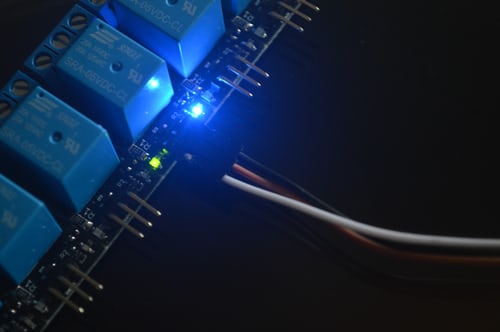1 coil voltage
The voltage used by the coil should be selected according to the rated voltage in the design. If not, it can be selected with reference to the temperature rise curve. Using any coil voltage less than the rated operating voltage will affect the operation of the relay. Note that the working voltage of the coil refers to the voltage applied between the coil terminals, especially when the amplifier circuit is used to excite the coil, the voltage value between the two terminals of the coil must be guaranteed. Conversely, when the maximum rated working voltage is exceeded, the performance of the product will also be affected. The excessive working voltage will cause the coil temperature to rise too high, especially at high temperatures, the high-temperature rise will damage the insulating material and affect the operation of the relay. Safety. For magnetic latching relays, the excitation (or reset) pulse width should not be less than 3 times the pull-in (or reset) time, otherwise, the product will be in the neutral state. When a solid-state device is used to excite the coil, the device's withstand voltage should be at least 80V, and the leakage current should be small enough to ensure the release of the relay.
2 Transient suppression
When the relay coil is powered off, an inverse peak voltage that is more than 30 times higher than the rated working voltage of the coil can be generated on the coil, which is extremely harmful to the electronic circuit. The method is suppressed so that the inverse peak voltage does not exceed 50V, but the parallel diode will prolong the release time of the relay by 3 to 5 times. When the release time is required to be high, a suitable resistor can be connected in series with one end of the diode.
Excitation power supply: At 110% rated current, power supply regulation ≤ 10% (or output impedance <5% coil impedance), DC power supply ripple voltage should be <5%. The AC waveform is a sine wave, the form factor should be between 0.95 and 1.25, the waveform distortion should be within ± 10%, and the frequency change should be within ± 1Hz or ± 1% of the specified frequency (whichever is greater). Its output power is not less than the coil power consumption.
3 Parallel and series supply of multiple relays
When multiple relays are powered in parallel, the relay with high inverse peak voltage (that is, the inductance is large) will discharge to the relay with low inverse peak voltage, and its release time will be prolonged, so it is best to control each relay separately and then connect in parallel to eliminate mutual influence.
Relays with different coil resistances and power consumption should not be used in series for power supply, otherwise, the relays with large coil current in the series circuit cannot work reliably. Only relays of the same specification and model can be powered in series, but the inverse peak voltage will increase and should be suppressed. The part of the supply voltage that is higher than the rated voltage of the relay's coil can be tolerated by the voltage divider ratio in series with the resistance.
4 contact loads
The load added to the contract should conform to the rated load and nature of the contact, and it is often prone to problems if the load is not applied according to the size (or range) and nature of the rated load. Products that are only suitable for DC loads should not be used in AC applications. Relays that can reliably switch 10A loads may not work reliably under low-level loads (less than 10 mA × 6A) or dry circuits. Relays that can switch single-phase AC power are not necessarily suitable for switching two asynchronous single-phase AC loads; products that are only specified to switch AC 50Hz (or 60Hz) should not be used to switch 400Hz AC loads.
5 contacts in parallel and series
The use of contacts in parallel cannot increase the load current, because the action of multiple sets of contacts of the relay is absolutely asynchronous, that is, it is still a load of a set of contacts after switching and increasing, and it is easy to damage the contacts without contacting or welding. cannot be disconnected. Contacts in parallel can reduce the failure rate for "off" errors, but the opposite is true for "stick" errors. Since the main failure mode of contact failure is "broken" failure, the parallel connection should be affirmed to improve reliability and can be used in key parts of equipment. However, the operating voltage should not be higher than the maximum working voltage of the coil, nor lower than 90% of the rated voltage, otherwise, it will endanger the life and reliability of the coil. Connecting the contacts in series can increase the load voltage, and the increase is the number of sets of contacts in a series. Contacts in series can improve reliability for "stick" faults, but the opposite is true for "broken" faults. In short, when using redundancy technology to improve the reliability of contact operation, it is necessary to pay attention to the nature, size, and failure mode of the load.
6 Switching rate
The switching rate of the relay should not be higher than the reciprocal of the sum of its 10 times the action time and the release time (times/s), otherwise, the relay contacts cannot be stably connected. The magnetic latch should be used under the pulse width specified in the technical standard of the relay, otherwise, the coil may be damaged.
Summarized by Easybom.



No comments yet